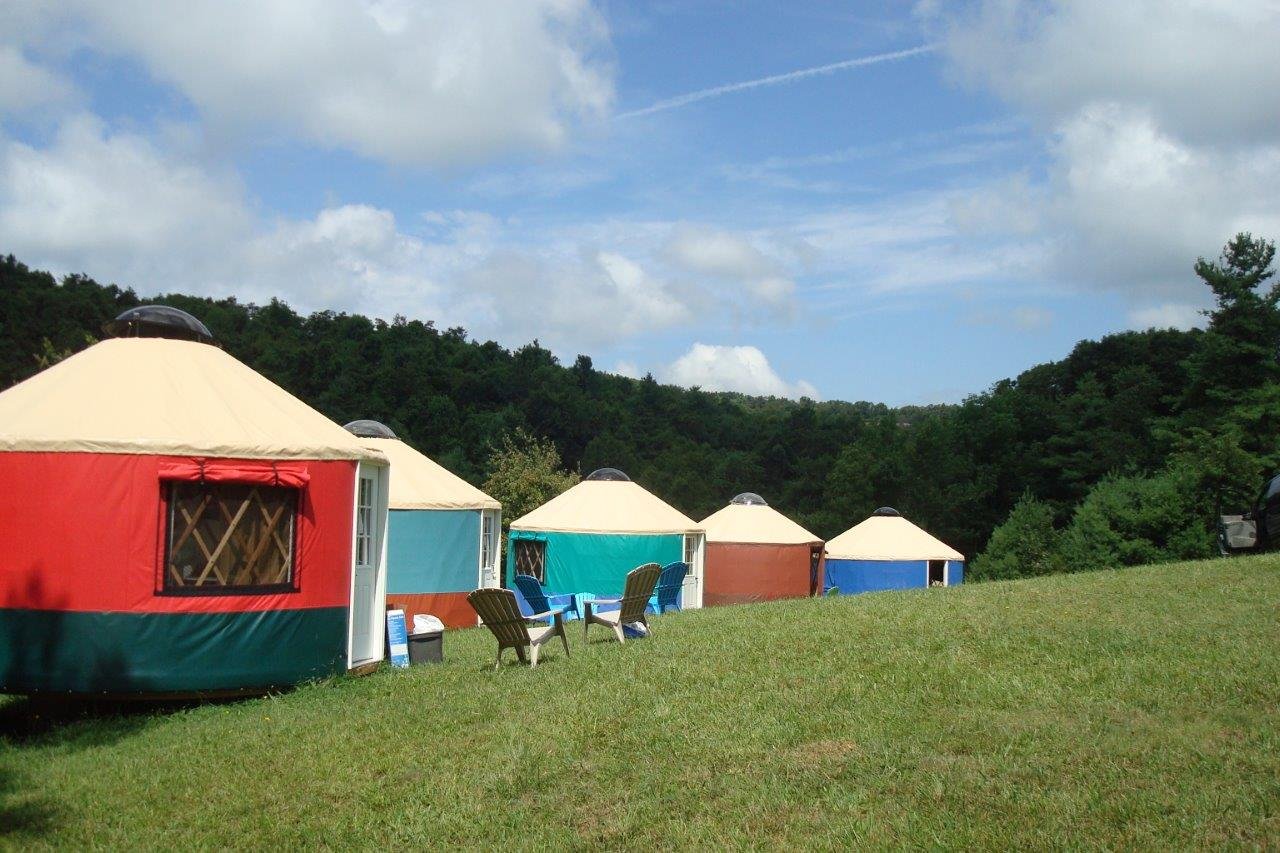What Is A Yurt?
A yurt is a portable, circular structure traditionally used by nomads in the steppes of Central Asia, dating back to the 12th century. The traditional yurt cover was felt, made by beating and rolling wet sheep fleece. The walls were low, made from poles, and the whole structure could be taken down and hauled by ox-cart. The yurt (ger) is still home to a large portion of the population in present day Mongolia.
Modern yurts take advantage of advances in materials and construction methods and are much more robust than their traditional counterparts.
How do you heat and cool a yurt?
You could heat your yurt in any manner that you would a conventional building: radiant floor heat, wood or propane stove, electric, or solar. Our foil insulation reflects whatever heat you generate back into the room. You can opt to have insulation panels that insert into your window flaps. Insulating your floor when you build your platform, adding window insulation, together with your wall and ceiling insulation, should keep you toasty on the coldest days.
It is easier to stay warm in a yurt than it is to stay cool in one. Yurts placed in treed areas will stay cooler than those in a completely open space. In a very warm location, you may want to consider a cupola, instead of a dome. A tinted dome option eliminates a lot of the UV rays. Our window flaps can double as awnings over the windows, which, especially if you put insulation in the flap pockets, would keep the heat at bay. Venting the dome allows the hot air to escape. Planning your window locations to get cross breezes helps a lot, as does adding in a screen door. A ceiling fan can keep the summer air circulated and push the warm air back down in the winter months.
Our yurts are engineered to withstand a minimum of 90 mph winds, without any interior supports. We have modifications to meet 140 mph winds. Our standard yurt contains vertical supports that can be added under half of the rafters, providing additional stability if needed.
We also recommend putting a hook and latch on the outside of your door and hooking it when you are gone, as very strong winds can twist the frame enough that the door may blow open, which could cause trouble.
Periodically, we will check that the bottom cable on the yurt is still tight up under the floor. This cable is our main insurance against wind ripping our walls.
What about snow load?
Our yurts are engineered for 40 psf (pounds per square foot) without any additional supports. Vertical support under every rafter would increase this psf.





